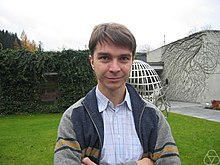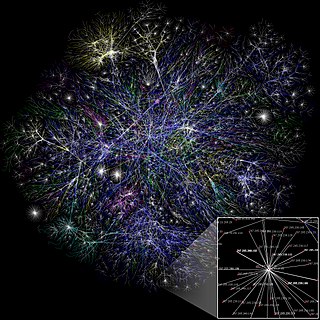
In statistical physics and mathematics, percolation theory describes the behavior of a network when nodes or links are added. This is a geometric type of phase transition, since at a critical fraction of addition the network of small, disconnected clusters merge into significantly larger connected, so-called spanning clusters. The applications of percolation theory to materials science and in many other disciplines are discussed here and in the articles Network theory and Percolation.
In mathematical physics, the conformal symmetry of spacetime is expressed by an extension of the Poincaré group, known as the conformal group; in layman's terms, it refers to the fact that stretching, compressing or otherwise distorting spacetime preserves the angles between lines or curves that exist within spacetime.
The Salem Prize, in memory of Raphael Salem, is awarded each year to young researchers for outstanding contributions to the field of analysis. It is awarded by the School of Mathematics at the Institute for Advanced Study in Princeton and was founded by the widow of Raphael Salem in his memory. The prize is considered highly prestigious and many Fields Medalists previously received it. The prize was 5000 French Francs in 1990.
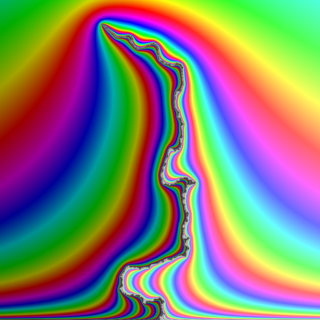
In probability theory, the Schramm–Loewner evolution with parameter κ, also known as stochastic Loewner evolution (SLEκ), is a family of random planar curves that have been proven to be the scaling limit of a variety of two-dimensional lattice models in statistical mechanics. Given a parameter κ and a domain U in the complex plane, it gives a family of random curves in U, with κ controlling how much the curve turns. There are two main variants of SLE, chordal SLE which gives a family of random curves from two fixed boundary points, and radial SLE, which gives a family of random curves from a fixed boundary point to a fixed interior point. These curves are defined to satisfy conformal invariance and a domain Markov property.

Oded Schramm was an Israeli-American mathematician known for the invention of the Schramm–Loewner evolution (SLE) and for working at the intersection of conformal field theory and probability theory.
Gregory Francis Lawler is an American mathematician working in probability theory and best known for his work since 2000 on the Schramm–Loewner evolution.

Harry Kesten was a Jewish American mathematician best known for his work in probability, most notably on random walks on groups and graphs, random matrices, branching processes, and percolation theory.

Michael Aizenman is an American-Israeli mathematician and a physicist at Princeton University, working in the fields of mathematical physics, statistical mechanics, functional analysis and probability theory.
John Lawrence CardyFRS is a British–American theoretical physicist. He is best known for his work in theoretical condensed matter physics and statistical mechanics, and in particular for research on critical phenomena and two-dimensional conformal field theory.
In mathematics, the connective constant is a numerical quantity associated with self-avoiding walks on a lattice. It is studied in connection with the notion of universality in two-dimensional statistical physics models. While the connective constant depends on the choice of lattice so itself is not universal, it is nonetheless an important quantity that appears in conjectures for universal laws. Furthermore, the mathematical techniques used to understand the connective constant, for example in the recent rigorous proof by Duminil-Copin and Smirnov that the connective constant of the hexagonal lattice has the precise value , may provide clues to a possible approach for attacking other important open problems in the study of self-avoiding walks, notably the conjecture that self-avoiding walks converge in the scaling limit to the Schramm–Loewner evolution.
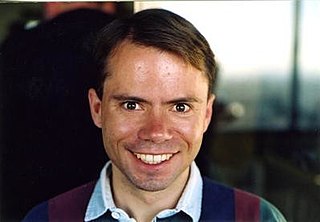
Scott Sheffield is a professor of mathematics at the Massachusetts Institute of Technology. His primary research field is theoretical probability.
Itai Benjamini is an Israeli mathematician who holds the Renee and Jay Weiss Chair in the Department of Mathematics at the Weizmann Institute of Science.

Gady Kozma is an Israeli mathematician. Kozma obtained his PhD in 2001 at the University of Tel Aviv with Alexander Olevskii. He is a scientist at the Weizmann Institute. In 2005, he demonstrated the existence of the scaling limit value of the loop-erased random walk in three dimensions and its invariance under rotations and dilations.
Nikolai Georgievich Makarov is a Russian mathematician. He is known for his work in complex analysis and its applications to dynamical systems, probability theory and mathematical physics. He is currently the Richard Merkin Distinguished Professor of Mathematics at Caltech, where he has been teaching since 1991.

Hugo Duminil-Copin is a French mathematician specializing in probability theory. He was awarded the Fields Medal in 2022.

Dmitry Sergeevich Chelkak is a Russian mathematician.

Tetsuji Miwa is a Japanese mathematician, specializing in mathematical physics.
Vladas Sidoravicius was a Lithuanian-Brazilian mathematician, specializing in probability theory.
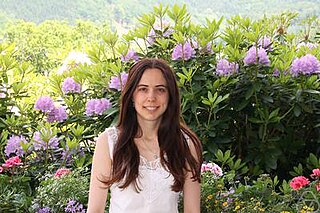
Nina Holden is a Norwegian mathematician interested in probability theory and stochastic processes, including graphons, random planar maps, the Schramm–Loewner evolution, and their applications to quantum gravity. She was a Junior Fellow at the Institute for Theoretical Studies at ETH Zurich, and is currently an associate professor at the Courant Institute of Mathematical Sciences of New York University.
